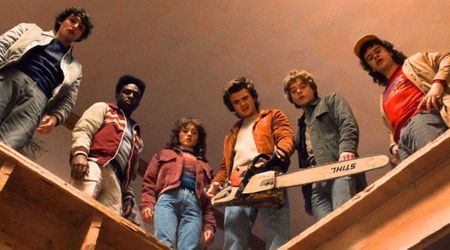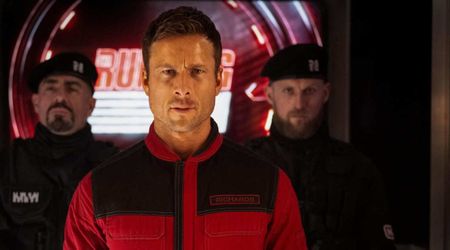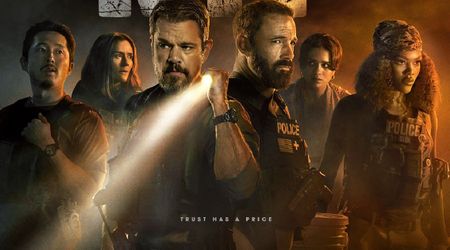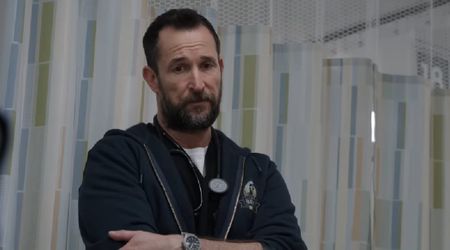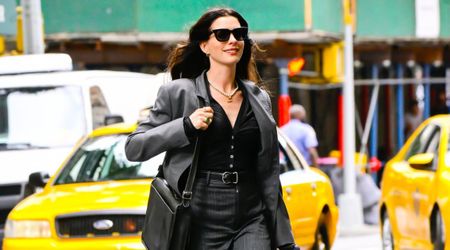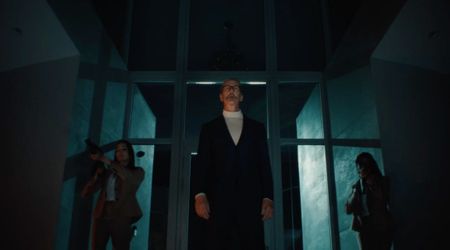Mercury 13: The story behind the remarkable women who were primed to be the first humans in space

Relations have almost always been frigid between the US and Russia. While the two superpowers banded together to take down the behemoth that was Hitler's Germany and the powers that made up the Axis during World War II, that alliance broke down almost immediately following the conclusion of the war.
America's development of nuclear weaponry that devastated Hiroshima and Nagasaki sparked an arms race between the two nations that provoked honest fears of a nuclear winter.
The decades between 1950 and 1990 saw the US and Russia locked in a Cold War, each nation trying to better the other in every aspect, from the trivial to the momentous, with each trying to undermine the other through covert operations and spy programs employing saboteurs to assassinate top-level officials. The US could ostensibly lay claim to winning that war following the spectacular collapse of the Soviet Union in 1991, but it had lost one major battle. One that probably still stings today.
Ask any American primary schooler who the first man on the moon was, and they will proudly answer with the name of Neil Armstrong. But they arguably only succeeded in doing so because they were humiliated, and thus, spurred on by the loss of another, more important race: that of becoming the first nation to send a man into space.
When Neil Armstrong proclaimed "One small step for man, one giant leap for mankind," as he stepped on the moon, little did he know that the phrase would earn him a place in the pantheon of humanity's most revered. But he shares that spot with the lesser-known Yuri Alekseyevich Gagarin, the Russian cosmonaut, who on April 12, 1961, escaped the Earth's thermosphere and became the first human to set foot into the final frontier.
There's a case to be made for the US considering they sent Alan Shepard and the crew of Mercury 7 above and beyond just a month after Gagarin made the perilous voyage, and it would be a decent argument as well.
But the one thing that the Soviets were still light years ahead at the time in comparison to their noisy adversaries would have been, surprisingly, gender equality. The first woman to make it to orbit was cosmonaut Valentina Tereshkova, who made the journey on June 16, 1963, in the Vostok 6. The first American woman to do the same? Sally Ride, over 20 years later in 1983.
However, that date could have come much, much sooner, if it were not for NASA's criminal undervaluation of women and a permeating, all-encompassing apathy for the concept of women in space; not just by the space agency, but by the entire US administration in general. It was a problem that should have irked the American people much more than it did at the time.
The shock of the 1957 launch of the Soviet satellite Sputnik saw $277 million poured into Project Mercury, which culminated in the astronauts dubbed Mercury 7 - Malcolm Scott Carpenter, Leroy Gordon "Gordo" Cooper, Jr., John Herschel Glenn, Jr., Virgil Ivan "Gus" Grissom, Walter Marty "Wally" Schirra, Jr., Alan Bartlett Shepard, Jr., and Donald Kent "Deke" Slayton - becoming the first Americans in space.
But in the background of this launch, which should have been a moment of pride for every American, something unsavory had taken place. Something that tainted the incredible achievement. Thirteen women, just as qualified as the crew of Mercury 7, were overlooked for the role because of nothing more than their gender. They were unceremoniously dubbed the Mercury 13.
Their heartbreaking, yet ultimately inspiring story has been chronicled in a documentary by British-born director David Sington, who started his career at the BBC World Service as a journalist before moving to television and film. Titled 'Mercury 13,' it follows the 13 women who were being prepped behind the scenes, behind the glares of the cameras, for space flight, but had their hopes crushed.
It was William Randolph Lovelace II, a former flight surgeon and later, chairman of the NASA Special Advisory Committee on Life Science, who helped develop the tests for NASA's male astronauts and who later wondered how women would fare on the same tests.
That curiosity led to Lovelace inviting Geraldyn 'Jerrie' Cobb, who, in 1960, underwent the same rigorous challenges as the astronauts of Mercury 7 and passed with flying colors. A further 19 women were then recruited, thirteen of whom passed the tests, and the rest disqualifying due to brain and heart anomalies. Out of the 700-odd candidates interviewed by Lovelace and Cobb, every single one was an accomplished pilot and not a single one had less than a 1,000 hours of flight experience.
Because the concept of space flight in itself was something new and unknown at the time, these women had to endure a comically large and unnecessary range of tests. There were X-rays, general body physicals, and psychological evaluations, which were the norm, but there were also some that would be classified outright bizarre.
They were made to swallow a rubber tube so their stomach acids could be tested; doctors tested the ulnar nerve of the woman's forearms using electric shock; doctors measured recovery time for vertigo by shooting ice water into the ears; their respiration was tested by pushing them to the point of exhaustion on specially weighted stationary bicycles. Still the women persevered.
After Cobb passed the phase III tests - which consisted of aeromedical examinations using military equipment and jet aircraft - the rest of the group prepared to follow suit and gathered at the Naval School of Aviation Medicine in Pensacola, Florida. But it would be here that their journey came to an abrupt end. A few days before the tests were set to commence, the women received telegrams abruptly canceling the program. NASA had pulled the rugs from underneath their feet.
To her credit, Cobb did not give up. She immediately flew to Washington D.C. to petition for the reinstatement of the program, writing to President John F. Kennedy and visiting Vice President Lyndon B. Johnson for her cause. The case soon caught the attention of the media after representative Victor Anfuso (R-NY) convened public hearings before a special Subcommittee of the House Committee on Science and Astronautics to look into the matter.
The hearing marked a watershed moment for American politics because of how it looked into gender discrimination as a possible cause for the dismissal of the program. The Civil Rights Act of 1964, which made doing so illegal, would occur only a full two years later and the open discourse on women's rights punctuated a shifting political landscape where such matters were slowly gaining steam.
Cobb's and Hart's testimonies on the benefits of Lovelace's project were duly undermined by Jacqueline Cochran, a pioneer of American women's aviation and a member of the infamous WASP group (Women Airforce Service Pilots), as well as NASA representatives George Low and Astronauts John Glenn and Scott Carpenter, who claimed the women did not satisfy NASA selection criteria.
It was pointed out to them that all NASA astronauts need to be graduates of military jet test piloting programs and have engineering degrees. But the catch was that, at the time of the hearing in 1962, women were still barred from Air Force training schools and no woman could become test pilots of military jets.
However, the hypocrisy in their argument was apparent as well. Glenn had sanctimoniously stated that "the fact that women are not in this field is a fact of our social order" but despite the prerequisite of an engineering degree, and his lack of it, he had still been assigned to the Mercury project.
Several of the women of Mercury 13 also had considerably more propeller aircraft flying time than the male astronaut candidates, but not in the high-performance jets that NASA wanted.
The furor over the case soon died down but came roaring back into the spotlight when Tereshkova became the first woman in space just a year after the shutting down of Lovelace's program, hurting prickly American sentiments.
The names and faces of these visionary women of Mercury 13 were finally revealed to the public after Clare Boothe Luce published an article on Life magazine criticizing both NASA and the American decision makers for their sneering misogyny.
The sorry state of affairs at the time is best summed up by this brief, condescending exchange that Netflix highlights in its trailer:
A news anchorman smugly asks his interviewee: "Why do you think there’s a need for women in space,"
She replies without hesitation: "Well, it’s the same thing as: 'Is there a need for men in space?' If we’re going to send a human being into space, we should send the one most qualified."
History is written by the winners. Unfortunately, the women of Mercury 13 - Myrtle Cagle, Jerrie Cobb, Janet Dietrich, Marion Dietrich, Wally Funk, Sarah Gorelick, Jane "Janey" Hart, Jean Hixson, Rhea Hurrle, Gene Nora Stumbough, Irene Leverton, Jerri Sloan, Bernice Steadman - were not so lucky. On April 20, 'Mercury 13' will finally tell you their side of the story.
The trailer for Mercury 13:

